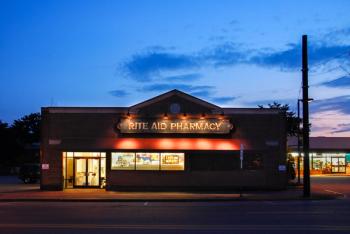
Considerations for Hepatitis B, Hepatitis C Screenings, Treatment in Patients Living With HIV
Any living person with HIV should be screened for hepatitis B and C upon diagnosis, with annual screenings recommended for those with additional risk factors.
Patients with HIV should be screened for hepatitis B virus (HBV) and hepatitis C virus (HCV) when they come in or are newly diagnosed, with annual screenings conducted for those with additional risk factors, explained Alex R. Mills, PharmD, BCACP, AAHIVP, during his presentation at the
“The test that we usually do is a [HCV] antibody test, and then that may change depending on the risk factors or changes in their liver function,” Mills said during the presentation. “For [HBV] screening, we're usually doing a hepatitis panel for both the surface antigen or antibodies, both core and surface.”
Mills noted that there is valuable CDC guidance available regarding the best path to take if 1 test comes back positive but 2 other tests come back negative. In general, the test result that definitely flags additional workup is a positive surface antigen test, according to Mills. In these cases, it would be beneficial to look for HBV in DNA versus RNA, since it's not a retrovirus, as well as assess for any fibrosis.
“Then you would repeat that test again, particularly if you're concerned about them not being immune to hepatitis B,” Mills said. “Some of our patients with HIV are non-responders to the hep B vaccine in the typical schedule, so sometimes retesting them [is beneficial]. And actually redosing or redoing the schedule, which I find fascinating—we don't fully understand why that happens—but that sometimes comes up as well for screening opportunities for our folks.”
In terms of treatments for this patient population, Mills noted that for HCV, the priority is to get them on an HIV regimen treatment so that they are virologically suppressed, and then get them on an HCV regimen that does not jeopardize the HIV treatment. Further, drug interactions are a significant concern during treatment selection for this patient population. Mills noted that the safest options for a newly diagnosed patient with both HIV and HCV are usually non-nucleoside analogues or a boosted regimen.
“When in doubt, though, if you don't already have the app, University of Liverpool database, use that for checking for drug interactions. There's one that's an HIV one, as well as one for hepatitis drugs, like hep C and hep B drug interactions,” Mills said. “Then we have to pay attention to, of course, renal monitoring. Some of these antivirals for hep C do have some dosing restrictions based off of renal function, so diligent monitoring is important too.”
For HBV, tenofovir alafenamide (Biktarvy; Gilead Sciences) or tenofovir disoproxil fumarate (Vemlidy; Gilead Sciences) plus emtricitabine (Emtriva; Gilead Sciences) or lamivudine (Combivir; ViiV Healthcare) included in antiretroviral backbone are still recommended, with frequent monitoring and counseling on occurrence of abrupt discontinuation, according to Mills.
Reference
Mills AR. HIV Update. Presented at: APhA 2023 Annual Meeting & Exposition in Phoenix, AZ; March 26, 2023.
Newsletter
Stay informed on drug updates, treatment guidelines, and pharmacy practice trends—subscribe to Pharmacy Times for weekly clinical insights.




















































































































































































































